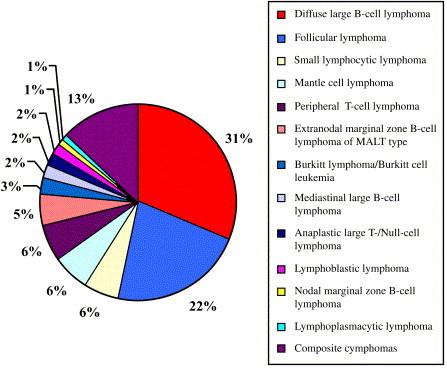NEW YORK — Chances are, if you haven’t trained or practiced at the VA, you haven’t seen cutaneous T-cell lymphoma (CTCL), a form of non-Hodgkin lymphoma. Researchers at the Bronx VAMC and Columbia University recently revealed why: The rare disease occurs six to 10 times more often in veterans.
The VA classifies CTCL and other non-Hodgkin lymphomas as presumptively caused by Agent Orange exposure or service in the Vietnam theater, even without exposure to the problematic herbicide. Both arise at markedly elevated rates in veterans, but it had remained unknown just how much higher the rate of CTCL was.

In a study published in the Journal of Investigative Dermatology, the researchers noted that “an estimated 5-15% of all CTCL diagnosed each year occurs in veterans, a percentage far greater than the percentage of veterans in the total U.S. population.” They hypothesized that as the Surveillance, Epidemiology, and End Results (SEER) Program, the main source of data for national disease incidence, excludes cases from VAMCs, the incidence of CTCL in the U.S. might be underreported.1
A search of the VA Informatics and Computing (VINCI) database for new cases of the two most common forms CTCL, mycosis fungoides and Sézary Syndrome, turned up 4,446 unique patients between 2004 and 2014. That represented a median of 69 (range of 62-79) new cases per million veterans per year.
“We found significant, 6-8 times higher incidence of CTCL in veterans than in the general population,” the researchers concluded.
The researchers noted that their data would impact the CTCL incidence trends in the U.S., but they could not say how much. “Given the different sources of the datasets, VHA vs. SEER database, conclusions regarding cancer incidences and changes in trends are challenging to achieve,” co-author Ali Dana, MD, PhD, of the Bronx VAMC told U.S. Medicine.
The study did not include other, rarer forms of CTCL, such as cutaneous CD30+ lymphoproliferative disorder, adult T-cell leukemia/lymphoma, extranodal NK/T-cell lymphoma (nasal type) and primary cutaneous peripheral T-cell lymphoma. Together, subtypes other than mycosis fungoides and Sézary Syndrome represent 47% of all cases of CTCL, so the recent study might underestimate the total incidence rate in the VA.
A study in JAMA Dermatology conducted by researchers at the Providence VAMC and Brown University identified a steady rise in the incidence of CTCL of 5.7% between 1973 and 1998. Since then, the rise in incidence has slowed to 0.1%.2 The estimated annual incidence of the disease is now about 10 per million.
The VA analysis found significant variations in the number of CTCL patients per conflict era, likely related to the effects of Agent Orange. However, “it demonstrated no trend in the incidence of CTCL in the veteran population between 2004 and 2014,” according to co-author Jessica Newman, MD, also of the Bronx VAMC, which might support the findings that the incidence rates have stabilized nationally.
New Therapies
Given their greater risk for CTCL, veterans will particularly benefit from advances in treatment of the disease. For years, research and therapies for this relatively rare disease have languished, but very promising new agents have recently emerged.

William S. Middleton Memorial Hospital and the University of Madison in Wisconsin
“If you think of targeted treatments, you can target intracellular signaling pathways, as is being done in breast cancer and melanoma, but not in CTCL yet, or you can target immune receptors on the surface of cells,” explained Stefan Schieke, MD, of the William S. Middleton Memorial Hospital and the University of Madison in Wisconsin. “One is CD30, which is expressed in many cases of CTCL and that is being targeted by brentuximab, which was just approved in November 2017,” he said.
Brentuximab vedotin, an anti-CD30 monoclonal antibody conjugated to a cytotoxic agent, received U.S. Food and Drug Administration approval based on the results of the phase 3 ALCANZA trial. The trial demonstrated that more than four times as many patients receiving brentuximab achieved responses lasting at least four months (56.3%) than patients receiving physician’s choice of therapy (12.5%).3
The drug gained approval specifically for patients with CD30-expressing mycosis fungoides and patients with primary cutaneous anaplastic large cell lymphoma (pcALCL), the second most common subtype of CTCL. Patients must have previously received systemic therapy.
“The FDA is also expected to decide on the approval of another monoclonal antibody in June, mogamulizumab, which binds to the chemokine receptor 4 protein,” Schieke told U.S. Medicine. “The data look similar to brentuzimab with about at 60% response rate. Most agents we use have response rates of about 30%.”
At the 2017 American Society of Hematology Annual Meeting in December, researchers from the Stanford University School of Medicine presented results of the Phase 3 MAVORIC trial that showed mogmulizumab more than doubled median progression-free survival (7.7 months) compared to vorinostat (3.1 months), the current standard therapy. Patients on the new agent experienced adverse effects at half the rate of those on vorinostat.4
“What is revolutionizing oncology for solid tumors are checkpoint inhibitors,” Schieke said. “There are small reports showing results with advanced stage patients with pembolizumab. I’m very optimistic based on anecdotal data and hope that that international trials will soon show really significant efficacy for CTCL.”
1Del Guzzo C, Levin A, Dana A, Vinnakota R, Park Y, Newman J, Langhoff E, Geskin L. 133: The incidence of cutaneous T-cell lymphoma in the veteran population. JID. 2016May;136(5):S24.
2Korgavkar K, Xiong M, Weinstock M. Changing incidence trends of cutaneous T-cell lymphoma. JAMA Dermatol. 2013 Nov;149(11):1295-9.
3Prince HM, Kim YH, Horwitz SM, et al; ALCANZA study group. Brentuximab vedotin or physician’s choice in CD30-positive cutaneous T-cell lymphoma (ALCANZA): an international, open-label, randomised, phase 3, multicentre trial. Lancet. 2017 Aug 5;390(10094):555-566.
4Kim YH, Bagot M, Pinter-Brown L, et al. Anti-CCR4 monoclonal antibody, mogamulizumab, demonstrates significant improvement in PFS compared to vorinostat in patients with previously treated cutaneous T-Cell lymphoma (CTCL): results from the phase III MAVORIC study. Abstract 817. Blood 2017 130:817/

